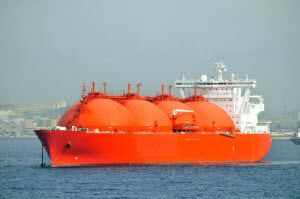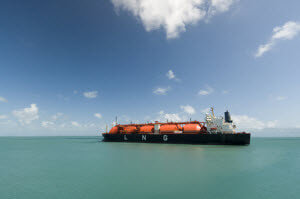Weighing the Pros and Cons of LNG Transportation Methods
The use of liquefied natural gas (LNG) has been on the rise in the gas industry, and it’s a proven and available solution for the shipping industry. But LNG transportation has been a drawback in many cases. Because of its makeup, it can be difficult to store and transport.
Learn more about LNG and the best ways to transport it.
Understanding LNG & LNG Transportation
 MarineInsight describes LNG as a natural gas (e.g., methane) in a liquid form that’s supposed to be known as the cleanest combustible fuel. It’s comparatively available in abundance and relatively inexpensive. The US leads in LNG usage, with 76% of US homes using LNG as heating fuel.
MarineInsight describes LNG as a natural gas (e.g., methane) in a liquid form that’s supposed to be known as the cleanest combustible fuel. It’s comparatively available in abundance and relatively inexpensive. The US leads in LNG usage, with 76% of US homes using LNG as heating fuel.
LNG is a liquid form of natural gas and condensed at -160 degrees Celsius at atmosphere pressure. When being transported, LNG must be compressed into liquid, as gas occupies more space than liquid.
To transport LNG while maintaining the various properties, there are three major types of LNG containment systems used in ships: membrane, Moss, and prismatic.
Learn more about why each one is beneficial.
Types of LNG Cargo Tanks
Membrane
Gaztransport and Technigaz designed the membrane type containment system.
 Technigaz originally designed the Mark-III tank. Its primary membrane consisted of stainless steel, and its secondary membrane was made of triplex and polyurethane foam reinforced with fiberglass.
Technigaz originally designed the Mark-III tank. Its primary membrane consisted of stainless steel, and its secondary membrane was made of triplex and polyurethane foam reinforced with fiberglass.
Gaztransport originally designed the GT-96 tank, with both primary and secondary membranes made of Invar and the insulation being plywood boxes filled with perlite.
GTT designed the CS-1, which is a combination of Mark-III and GT-96 where the primary membrane is Invar and the secondary membrane is triplex.
Moss
The Moss LNG vessel is a spherical containment system that now has over 100 vessels in operation. Due to its spherical shape, the tank “enables high accuracy of predicted stresses and fatigue life of all parts of the tank structure, thereby eliminating the need for a full secondary barrier.”
The tanks are made of aluminum and supported by a structural transition joint, which acts as a thermal break between steel and aluminum. They’re insulated with polyurethane foam that’s purged with nitrogen. There’s a partial barrier beneath the sphere, which is fitted, and a gas sampling system is fitted to catch leakage.
There are many advantages of this type of containment system, such as the lowest LNG heel possible because of the spherical design. These tanks are also independent of the ship’s hull and therefore not affected by the ship’s hull strength or damaged by the hull.
Prismatic
The first maritime LNG containment system was a prismatic Type A tank installed in a World War II-era cargo ship converted for gas carriage under ABS class in 1958. Prismatic refers to the tank’s beveled geometry.
The main benefits of the tank are “a proven immunity to sloshing problems that allows LNG ships to go to sea partially loaded – even in harsh weather – and a customizable geometry that, among other benefits, results in the kind of flat-deck vessels needed for floating processing plants.”
Learn more about CPV Manufacturing and our superior valves and fittings. If you have any questions, please contact us today.

